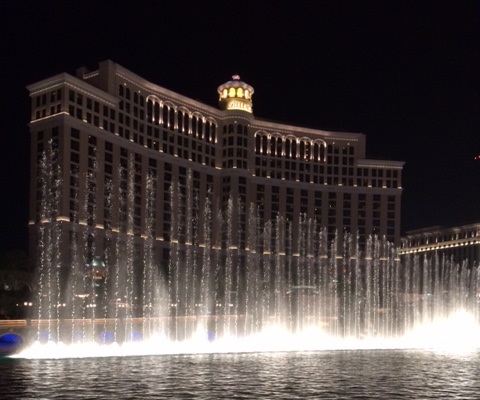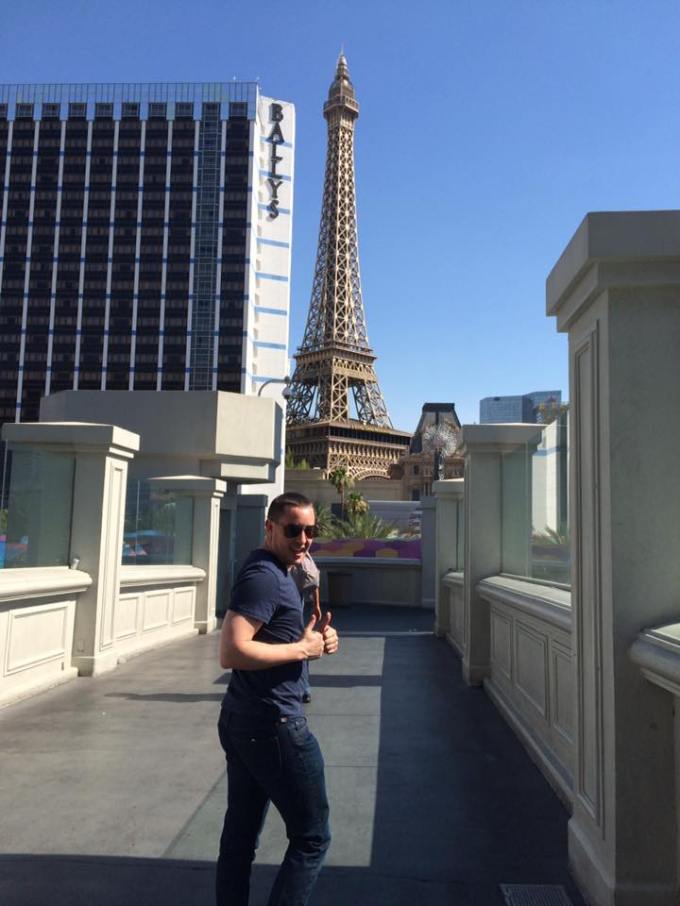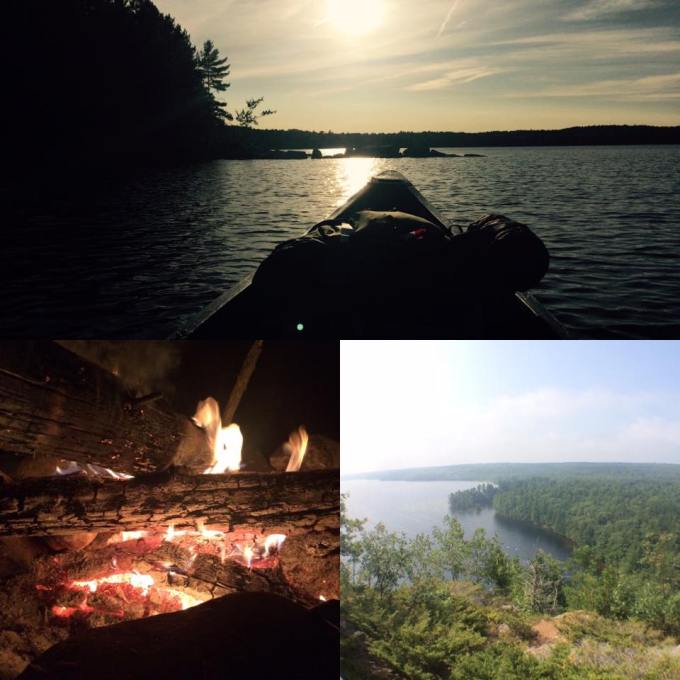Tourism as a field of research is still young and as such, has suffered somewhat of an identity crisis, evident through the large number of definitions that seek to properly situate tourism either as a standalone field or embedded within a larger context. Believing strongly that tourism fits the latter description of embeddedness, Dean MacCannell, a prominent sociologist and anthropologist from the early tourism days of the 1970s and still building on his work today, has helped to usher in the sociology of tourism perspective – that is, in which ways do groups of people interact with tourist spaces . Due to his rise to meet the early formations of tourism as a discipline, MacCannell was a student born of different disciplines – he received his Bachelor’s Degree in Anthropology at the University of California in Berkeley in 1963, and his Doctorate Degree in Rural Sociology at Cornell University in 1969. Following this educational upbringing, MacCannell began to drift his interests in rural sociology toward the application of leisure behaviors and, ultimately, tourism. A part of what drove MacCannell’s initial push toward the tourism sector was his concerns over the negative effects of modernity on social spaces in which tourists interact (MacCannell, 1973). Using mostly qualitative techniques, particularly semiotics, MacCannell combined his knowledge of sociology to advance tourism for the next 40 years, and continues to this day to remain an active member of his academic community.
This week, I had the great fortune of speaking with Dr. MacCannell regarding his views on tourism in regards to curbing mass tourism, discussing alienated leisure, and his suggestions for future tourism scholars as an area of focus. Check out our discussion, below:
ML: What is your most memorable travel experience, and what makes it stand out to you?
DM: It would be easier for me to recount my most forgettable travels. Every trip is memorable but for different reasons. They are hard to compare. I will give you two.
As a child I travelled extensively in wilderness areas in Washington State. My parents were poor and hiking and camping was the only form of tourism we could afford. In the 1950s I lived in rural California about 15 miles from the Mexican border. The interior of Baja California was mainly unknown. Before satellite imaging there were no maps of Baja south of Ensenada. The existence of one of the last unexplored and unmapped parts of the world only 50 miles from my home proved to be an irresistible attraction to me as a teenager. I explored and drew maps of the deserts and the San Pedro Martír mountain range to share with other climbers. In 1959, at age 19, I became one of the few who had found and reached the top of El Picacho del Diablo the highest peak in Baja. I have given a more detailed account of my Diablo climb in Via Tourism Review: http://viatourismreview.com/2016/06/maccannell/.
After the “Events of May” in 1968, Juliet and I unwound by hitchhiking from Paris to Istanbul and back. Our route took us across Yugoslavia and Bulgaria at the height of the Cold War. We were given a ride by a high ranking Bulgarian army officer in the lead car of a military convoy. He was not initially amused at having picked up two “American spies.” But we soon became friends. A woman in Sofia who illegally sheltered us for a night in a black market room sent us Christmas cards for years after. We can still remember the delicious tomato and basil salad she prepared for us when we told her we had not eaten all day.
ML: Generally speaking – why do we travel?
DM: Today with video conferencing and VR experiences of all the worlds’ attractions soon to be available, there is no longer any reason to travel. Except human beings have always traveled. Our survival depends on it. Culture, or what we now call the symbolic order, is the basis of our survival as a species. Culture does not change on its own in response to existential threat. The tendency of a symbolic system is toward self-preservation, the mythic, the static, the creation of place and identity. But the future of humanity is predicated on questioning our existing symbolic order and adapting to changing conditions. In the past, the primary impetus for transforming symbolic values was contact with different symbolic systems through travel. Therefore, even if there is no practical reason for travel, or evident function, it remains crucial to our collective adaptation. I went over this in some detail my 2011 book The Ethics of Sightseeing. At the superficial level of individual psychological motivations, there are as many reasons to travel as there are travelers—to find something new to remember, to get away from something and try to forget, to find a new love, to keep up with the Jones’s, because you saw a picture of Yosemite in a magazine, because your mother told you to, etc. etc. But all of this is nothing more than the chaff of obfuscation that makes busy-work for professors. At a psychoanalytic level where the unconscious meets the socio-symbolic, there can only be two options—only two reasons to travel.
Sightseeing is the closest we will ever get to the socio-symbolic order as such. Tourism alone puts the entire cultural and natural universe literally “up for grabs.” Every symbolic value has concrete representations among the things tourists go to see. Sometimes it is in your face like freedom as symbolized by the Statue of Liberty. Most symbolic values lurk just beneath the surface of the attractions we visit. Gender definition and every other identification, heroism, desire and its objects, all our ideals, the meaning of success and failure, the “good,” evil, beauty and ugliness, the “other”—all symbolic values have their touchstones in the form of tourist attractions. So what do tourists do in the presence of this enormous potential? It is perfectly predictable that sightseeing’s potential to transform consciousness and the symbolic is repressed by the very institutions that support tourism.
For some, it is just too much. They want to escape what they perceive to be the painful rigors of civilization—to get to do nothing for a change; to lay on a beach and be served drinks with little umbrellas in them; to be free, at least for a moment, of all social responsibility; perhaps they might find ultimate release far from home in drug-enhanced sex with a stranger. These tourists fantasize the possibility of literally being able to ‘get away from it all.’ This pole of the tourist dialectic is founded on an assumption that the symbolic order “is what it is,” for better and for worse, we are stuck with it, or in it. All we can do for pleasure is to get free of it for discrete periods of time before returning to its strictures and confines. Of course this “getting free of it” is pure fantasy as the luxury cruise to nowhere, the all inclusive resort that could be anywhere, are as firmly embedded in the symbolic as the rest of life. In fact they are even more totalizing and coercive than other areas of life. This motivation goes hand in hand with false nostalgia for a past order in which everyone was thought to have had a stable and proper place.

The other pole is curiosity about oneself and humanity, an interest in seeing some thing that made a new opening in the symbolic order—the quay in Venice where Marco Polo stepped off toward the Orient, for example. Any place, object, or event that marks the moment when a particular social order loosens its hold over its subjects and permits them to breach its boundaries and revise their sense of space, time and identity, and ours. This tourist motivation models real ways of escape rather than fantasized ones. It harvests the raw material for the kind of changes in the symbolic that are necessary for our continued survival. This motivation is not “stuck” in some preexisting order. These tourists want to enlarge the idea of a beyond of the symbolic walls around them. This reason for travel affirms our basic human heritage in common with others. This model is spelled out in detail in “The Two Fantasies in Architecture for Tourism” (Dean MacCannell and Juliet Flower MacCannell, Forthcoming, VIA).
ML: In our initial conversation, I falsely suggested that you didn’t believe in authenticity at all. You were reassuring in pointing out that I wasn’t the only person to draw this conclusion from your work. Can you give a sense of what you actually meant, in terms of its connection to your work on alienated leisure?
DM: I don’t remember ever having written that there is no such thing as an authentic tourism experience. I have tried to stay out of the minds of individual tourists—to let them experience and feel whatever that might wish.
My focus has always been on the rituals and institutions of tourism and on what these might imply about our modern humanity. I discovered “staged authenticity” in tourist settings and provided enough evidence for the existence of the construct that it hasn’t gone away—the many shows put on for tourists to make them believe that they have somehow gotten in with the natives, behind the scenes, or seen the kind of things ordinary tourists don’t get to see. But I never claimed that tourists are necessarily “taken in” by staged authenticity. If you consult my original article, you will find several examples of tourists who make jokes about this kind of staging for their benefit and clearly regard it as silly.
It is true that I based my explanation of the sightseeing drive on modern alienation and the weakening or dilution of intimate social bonds in modern life, bonds that might be experienced as “authentic.” My concept of “alienated leisure” is openly derived from Marx’s concept of “alienated labor.” It does not take a virtuoso reader of Marx to know that even if a worker loves his work, his boss, and his co-workers, and looks forward to going to work every day, that does not make his labor any less alienated. In a strict sense, so long as the profits of his labor accrue not to the worker, but to the owner of the means of production, the worker’s labor is alienated. Probably all the more so, or at least pathetically so, if he experiences “joy in work.” The underlying question of alienated leisure is the same: what is the surplus value of leisure at the level of the entire society? If society evolves to the point where, from the perspective of its ordinary, everyday members, it appears unimaginably huge, ungovernable, disconnected, fragmented, what can be done to impose upon it some sense of order and meaningful connection? My argument at this point became dialectical. I stated, rather too clearly I suspect, that the very fragmentation of society today, its disconnections and dislocations, have become primary resources for new and modern kinds of solidarity founded on resistance to the rule of alienation. However it may be experienced psychologically in the mind of the tourist, this is the structural engine of tourism.

ML: Building on your comments regarding the alienation of leisure and the surplus value at a broader scale, I’d like to point out that Venice has recently experienced this in a very real way, as protests against a surging rate of mass tourists become more common place. Other popular tourist sites are also seeking ways to curb mass tourism. Can you offer some of your own suggestions for ways in which tourists can substitute quantity with quality?
DM: Tourism researchers could have a role in creating models of how effectively to repel tourists. This does not strike me as a particularly difficult task, and in coordination with community leaders and/or activists, there is little reason why it could not go forward apace. The first step in developing “tourist repellent” would be to derive applications of the conceptual model of tourist motivation as outlined above. Each type of tourist motivation has a completely different relationship to culture (both the host culture and the tourists’ own culture) and accordingly each has completely different infrastructural supports. Once the dominant type of tourism at a particular destination has been identified, and an analysis of its infra-structure supports completed, strategies for shrinking it or even shutting it down completely should be evident.
Type I: The tourists’ motivation is simple curiosity about oneself and humanity, an interest in seeing some thing, from the past or in the present, that promises a new opening or insight on one’s own culture. These are the ethical tourists, the kind that have been wandering around Barcelona, Paris, Venice, etc., for several hundred years and continue to come today, deterred only by the growing numbers of the second type of tourist and capitalist promotion of ersatz attractions for the second type.
Type II: A second type of tourist is motivated by a fantasy of escaping all confines of their culture and every other culture. From their perspective, they are travelling to no-places, ‘utopias’ that seem completely beyond any established social order and their locked-in place in it. One filth-strewn beach is as good as any other for drunken sex with a stranger. Their resorts could be anywhere, their cruises could be to nowhere. So long as the “package” promises relief from everyday responsibilities and duties toward oneself and society.
The first step any community or a region needs to take in shrinking tourism would be to make a determination of which type they want to discourage. Because the measures needed to reduce their numbers are very different. The public and private tourist sectors appeal to the first kind of tourist motivation by maintaining monuments, parks, museums, historic sites, and scenic landscapes. The infra-structure needed is effective heritage and nature preservation initiatives, quality site maintenance, accessible public transportation with clear signage, knowledgeable guides and detailed information, and hotels, restaurants, and cafés accessible to visitors from every social stratum.
The tourist industry appeals to the second kind of tourist motivation by offering all inclusive resorts and “cruises to nowhere,” and for those who can’t afford a cruise to nowhere, crowded charters to beach resort areas.

The infra-structure needed is cheap charter flights, hotels that accept over-crowding in the rooms, lax standards for public alcohol and recreational drug consumption, etc. The negative impacts of both kinds of tourism can be mitigated by encouraging off-peak travel and requiring completion of on-line courses in local behavioral norms and standards before booking travel arrangements, or as a condition of hotel check-in. The second type of tourists can be discouraged by local vendors agreeing to raise the rates on everything—food, drinks, lodging—all at once and across the board. They could start low at, say five percent, and then slowly increase until they find a “sweet spot” where they are making the same profits from 30 percent fewer tourists. And/or, local ordinances against public drunkenness, nudity, beach fires, noise, could be rigorously and visibly enforced: arrests made, fines levied, jail time. If tourists arrive by car, municipalities can reduce the amount and convenience of street parking for those not displaying a local resident’s permit. Etc. This is not really difficult to figure out. In fact, it would be so easy to shut down the commercial tourist sector of a regional economy I suspect that most of the complaints about “too many tourists,” or “boorish tourists,” are in bad faith.
ML: Today, tourists are presented with a commodification of tourist sites with markers that are difficult to reconcile with the real thing (for example, Statue of Liberty piggy banks). What impact do you feel this has had on tourism, generally?
DM: You will find several sustained passages in The Tourist and my other writings where I remark that the tacky commercialization of tourist attractions and their simulacra (your piggy bank example is excellent) are perfectly predicted by the dialectics of authenticity. The penumbra of junk surrounding the attraction is crucial to the perception of the attraction as the “Real Thing.” The junk doesn’t detract—it enhances. The more junk the more real. And possession of a Statue of Liberty piggy bank serves to affirm the possessor’s connection and obsequious obeisance to the symbolic values embodied in the Statue of Liberty. That’s not necessarily a bad thing.
ML: What advice can you give future tourism researchers in regard to things to watch out for, and which areas that you feel tourism research needs more attention?
DM: Most tourism researchers today think of themselves as providing expert advice to players in the travel and leisure sectors of the economy. The emphasis in the literature is on what drives tourist numbers up, destination reputation, new motivations to travel (sex tourism, medical tourism, etc.), new leisure products, etc. I will not presume to give advice, but I will confess that personally I find this work terminally boring for the most part.
There are three existential questions that should be on the minds of tourism researchers today. (1) humankind fighting to survive man-made environmental disasters by trying frantically to switch to sustainable energy sources, saving and restoring precious natural resources, by recycling our waste, etc.; (2) some of us fighting to complete the project of democracy to the point that it can actually make good on its promises of life, liberty and the pursuit of happiness for all; (3) unprecedented geo-cultural dislocations—millions of peoples in motion—huge and rapid flows of migrants and refugees and tourists with almost pure uncertainty overhanging these collective projects. If I could not meaningfully connect my future.





















